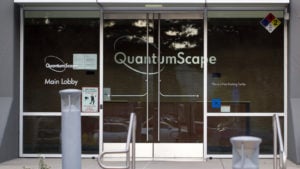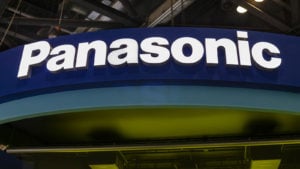It’s time to buy battery stocks. With the world going green, we’re seeing a massive shift to electric vehicles. Coupled with government incentives, stricter emissions regulations, advancements in technology, and global leaders demanding millions of EVs in the next decade, anything EV-related has been explosive. That includes demand for electric vehicle batteries.
“As the global market for these vehicles expands rapidly, the demand for batteries continues to soar,” as noted by Cross Roads Today. “From improved battery technology to declining battery costs to the expansion of charging infrastructure and going electric with other transportation segments, the growth in EV battery demand is shaping the future of mobility and energy storage.”
With that in mind, it’s time to buy the following battery stocks.
QuantumScape (QS)

One of the first times I mentioned QuantumScape (NYSE:QS), I said it could be one of the most exciting battery stocks on the market. That was on April 11, as QS traded at $7.30 a share. Today, it’s up to $12.52 and could race to higher highs.
Granted, QS is still a pre-revenue solid-state battery company. It’s also not making money just yet. In fact, it just posted a loss of 26 cents on no sales.
However, in the company’s Q2 update, it announced its collaboration with a customer in the auto sector, which could lead to sales. And that could in turn lead to revenue by 2025. Even Toyota (NYSE:TM) is bullish on solid-state batteries.
“It seems solid-state batteries as a power source for future EVs, which is a sizable catalyst for QS,” the company said in a July 10 article.
Panasonic (PCRFY)

Also that month, I mentioned Panasonic (OTCMKTS:PCRFY) again, as it traded at $11.98. While it’s now up just a few cents at $12.07, it remains a good bet. Not only is the company working with Toyota and BMW, but Subaru may also be joining the list.
“Subaru may opt to use 4680 batteries, the newest cells championed by Tesla’s chief executive, Elon Musk, for which Panasonic’s energy unit is looking to increase production,” according to Reuters,
Even more impressive, Panasonic is accelerating plans to expand its production of EV batteries at a facility in Nevada, which is jointly operated with Tesla. Once finished, annual production capacity could increase by 10% by March 2026, according to a Seeking Alpha report.
“That would be enough battery capacity for 500K to 700K Tesla Model 3s,” they added.
BYD Co. (BYDDF)

BYD Co. (OTCMKTS:BYDDF) traded in July at $32.85, but is now up to $35.18 after testing a high of $36.27.
“BYD also produces its own EV batteries, and it is one of the leading battery suppliers in China,” as noted in my July article. “[The company] is expanding its production capacity rapidly, and it is well-positioned to benefit from the growth of the EV market in China.”
BYD also launched its Denza N7 SUV, a potential rival to Tesla’s Model Y. In addition, it announced plans to invest $1 billion to make EVs and batteries in India. It delivered another round of strong growth in June, selling 253,046 EVs – a 5.3% jump month over month. For the first half of the year, BYD sold 1.25 million units, representing a growth of 95% year over year.
Furthermore, Goldman Sachs analysts have initiated a buy rating on the BYD stock. The firm believes company profitability will expand even more in the second half of the year.
On the date of publication, Ian Cooper did not hold (either directly or indirectly) any positions in the securities mentioned. The opinions expressed in this article are those of the writer, subject to the InvestorPlace.com Publishing Guidelines.
